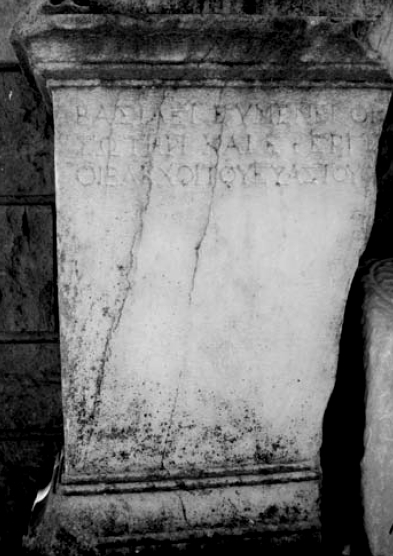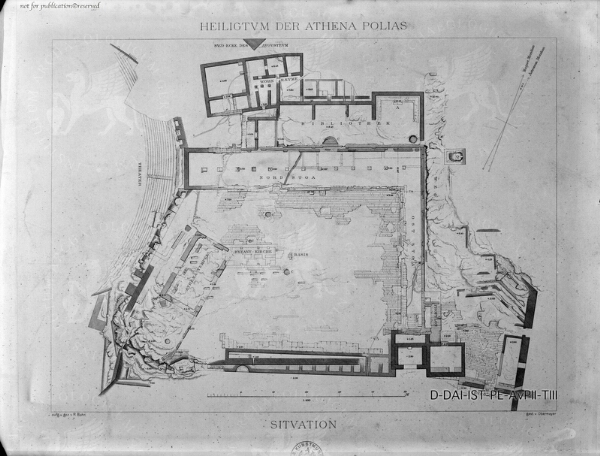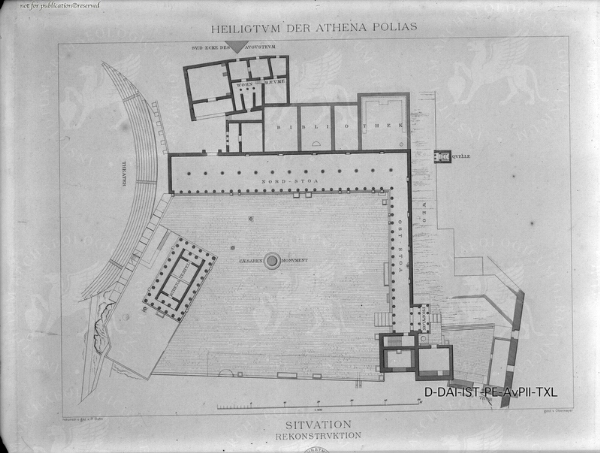The text is elegantly written in three lines at the top of the front surface. In the first two lines, words are carefully separated in order to draw more attantion to the name and epithets of the deceased king;
conversely, the words composing the name of the donors in line 3 are not separated.
Elegant letters of the mid-2nd cent. with small apices at the end of hastae. The remarkable width of round letters (O, Ω, Θ) gives the impression that the stonecutter has taken care that each letter occupies approximately the same space (with the only exception of I) in order to increase the order and elegance of the inscription.
Σ with parallel horizontal bars. The shape of A with horizontal crossbar stands out as a conservative feature in relation to the contemporaneous epigraphy of Pergamon, which often testifies to the use of A with broken crossbar. Conservatism is a feature paralleled by other high-quality inscriptions of the 2nd-1st cent. (cf. PHRC025).
Letter height between 1,5 and 1,8 cm.







